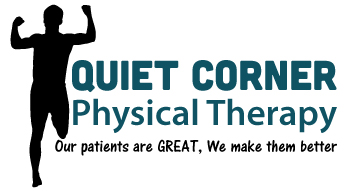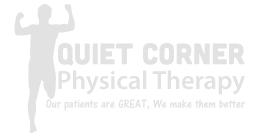
Embrace Winter Without Fear: Tips from Physical Therapy Experts
Winter brings with it not only a season of joy and celebrations but also a high possibility of injuries due to slippery conditions. It’s essential to prepare adequately and know how to manage such situations if they occur. Physical therapy experts offer a wealth of knowledge on this subject. They can help you understand common winter injuries, how physical therapy can help manage these injuries, specific treatments for different winter injuries, tips to avoid these injuries, the importance of early intervention, and finally, guide you on returning to winter activities post-recovery.
The Common Winter Injuries and How They Happen
As we slide into the snowy season, there’s a flurry of potential injuries that can rain on your winter parade. Ever taken a nasty spill on an icy sidewalk? That can result in fractures, sprains, or strains. But the cold weather culprits aren’t just limited to slippery surfaces. Believe it or not, activities like shoveling snow can be a real back breaker and even put excessive strain on your heart. And for those adrenaline junkies hitting the slopes, be warned. Skiing and other winter sports carry their own set of risks, especially when you’re not properly prepared or equipped.
So, as you venture out into the winter wonderland, remember to be aware of these potential hazards. Awareness is the first step in prevention and staying injury-free this winter season.
The Role of Physical Therapy in Managing Snow-Related Injuries
Snow-filled winter escapades can sometimes lead to unexpected injuries, casting a shadow over your winter joy. This is where the invaluable contribution of physical therapy shines brightly. From painful fractures to sprains, physical therapy can work wonders to help alleviate discomfort, boost mobility, and restore strength.
Tailored to fit like a glove, your physical therapy recovery plan will be as unique as your injury and recovery goals. This bespoke approach ensures you’re back on your feet, or skis, or snowboard, as swiftly and safely as your body allows. Physical therapists have a treasure trove of techniques at their disposal, which they employ based on the type and extent of your injury.
But their role isn’t limited to just nursing you back to health. They don their educational hats too, offering priceless advice on how to steer clear of future injuries. So, whether you’re nursing a sprained wrist from an unfortunate ice-skating tumble, or recovering from a skiing mishap, rest assured, physical therapy can be your road to recovery and your map to avoiding injuries down the line. Physical therapists are like the superheroes of the snow injury world – fighting pain, restoring function, and educating on prevention!
The Specific Treatments for Different Winter Injuries
When it comes to tackling the aftermath of winter injuries, the type and severity of the injury dictates the course of treatment. If you’ve fractured a bone or sustained a serious sprain, initial treatment generally involves immobilizing the affected area and managing pain. Once the initial healing process has begun, physical therapy comes into play to help rebuild strength and restore mobility.
Remember, treatments are not one-size-fits-all. Each therapy program is as unique as the individual receiving it. And it’s not just about healing the injury at hand. Your physical therapist is also your guide to preventing future injuries, keeping you safe and active on your winter escapades. So whether you’re sidelined with a fracture from a tumble on the ice, or nursing a sprain from a downhill skiing adventure, physical therapy provides a tailored pathway to recovery and future injury prevention. Your physical therapist is a superhero in a winter injury scenario – battling discomfort, rebuilding functionality, and offering guidance for injury prevention!
Tips to Avoid Winter Injuries
Slip into your winter boots and let’s traverse the ice-covered path of injury prevention. Instead of nursing a sprain or a fracture, you’d much rather be frolicking in the snow, wouldn’t you? So here’s how to keep the icy grips of injury at bay:
Step one – lace up in shoes that know a thing or two about traction. Good grip is essential when you’re navigating snowy or icy terrains. Wearing the right footwear can make a world of difference in preventing slips and falls.
Before you flex those muscles for a session of snow shoveling, remember to warm up. Like any other physical activity, prepping your body is crucial. A quick warm-up gets the blood flowing, making your muscles less susceptible to injury.
Shoveling snow can turn into quite the workout, so make sure you’re taking breaks. Overexertion is a silent culprit in many snow-related injuries, and frequent rests can help keep it at bay.
If winter sports are your thing, safety gear isn’t just an accessory – it’s a must. The right equipment can go a long way in shielding you from harm, so never hit the slopes without your safety gear.
And lastly, maintaining good physical shape isn’t just for summertime beach trips. Winter demands a healthy, well-conditioned body too. Remember, a fit body is more resilient to injuries and recovers faster when accidents do happen.
So, stay safe, and let the winter fun begin!
The Importance of Early Intervention in Injury Management
Just like a snowball rolling downhill, a winter injury can quickly escalate if not addressed promptly. Early intervention is crucial in managing these injuries effectively. Spotting the warning signs and taking swift action can transform the injury journey, leading to a speedier recovery and reducing the chance of it snowballing into a more severe issue. Early intervention doesn’t just put you on the fast track to recovery; it can also act as a damage control mechanism, minimizing the risk of a minor injury evolving into a chronic condition. Often, physical therapists play the role of frontline warriors in this scenario, offering critical early intervention care. They can jumpstart your recovery process, setting the stage for a successful rehabilitation journey. So, if winter has thrown you a curveball in the form of an injury, remember, the sooner you start addressing it, the better your recovery prospects. A timely response to a winter injury can make all the difference in your healing process. Don’t let an injury snowball out of control; take action at the first sign of trouble, and remember, your physical therapist is your ally in this early intervention mission.
Life After Recovery: Getting Back to Winter Activities
Bouncing back into the chilly embrace of winter activities post-injury can seem like a mountainous challenge. However, equipped with the right guidance, a pinch of patience, and a splash of determination, you can conquer that mountain! A physical therapist is your sherpa in this scenario, guiding you safely and steadily back to your favorite winter pursuits.
They’ll map out a recovery journey that respects your individual pace and keeps your specific goals in mind. The path will have a strategic blend of strength-building exercises, mobility-enhancing stretches, and balance-restoring activities. As you advance along this path, you’ll notice a gradual improvement in your strength, flexibility, and most importantly, your confidence.
Remember, it’s not a race, and slow and steady can often win the day. You’ll likely start with basic, low-impact exercises, eventually working your way up to more complex and strenuous activities. Over time, you’ll find yourself ready to strap on those skis, lace up those ice skates, or wield that snow shovel with renewed vigor and assurance.
Ultimately, recovery is not just about getting back to the things you love. It’s also an opportunity to rediscover your abilities, appreciate your body’s resilience, and deepen your understanding of injury prevention. So, here’s to a smooth recovery journey and an exciting return to your beloved winter activities. With physical therapy by your side, you’re ready to embrace the magic of winter without fear!
Our dedicated staff is completely devoted to making your physical therapy experience as easy and enjoyable as possible. We pride ourselves on providing each and every one of our patients with industry-leading individualized care and treatment plans. The number one concern of our compassionate staff is your well-being. Quiet Corner has the unique ability to utilize the most effective treatment techniques and services including cupping, paraffin, dry needling, mobility tools, E-stim, TENS, taping, traction, and joint/soft tissue mobilization just to name a few.


